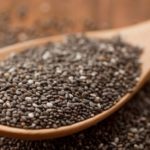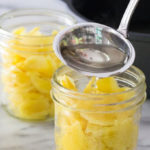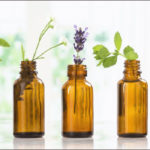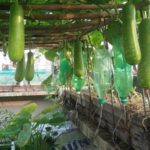The mentioned type of vegetable is purple perilla leaf. Perilla leaf is a popular and inexpensive aromatic vegetable in Vietnam. Just sow a few seeds into the ground and perilla leaves will grow abundantly. The older plants shed flowers in the spring, and perilla leaves grow back easily without the need for pesticide. Perilla leaves have a fragrant essential oil, which makes them resistant to pests, thus they are safe to consume and require minimal pesticide use. Vietnamese people mainly use perilla leaves as a spice in some dishes without knowing the many benefits this vegetable has.
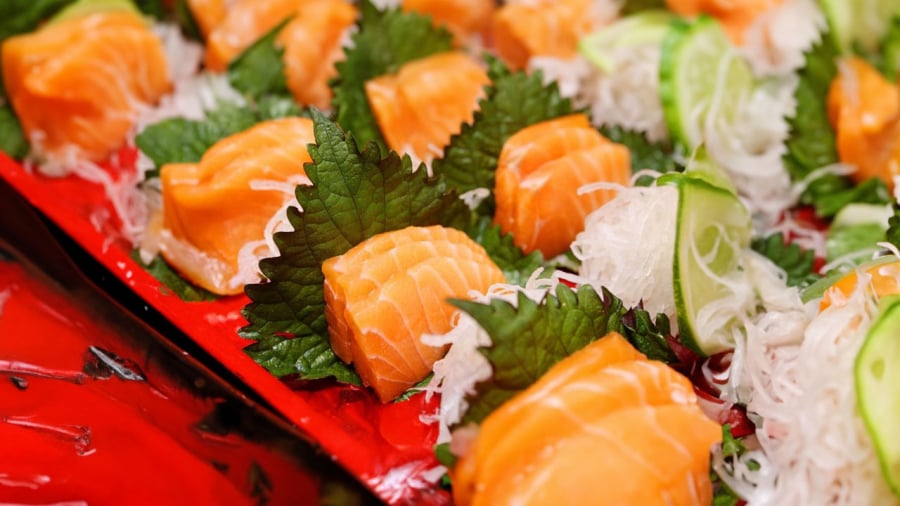
In Vietnam, perilla leaves are very cheap, just a few thousand Vietnamese Dong for a bunch of large leaves. In Japan, perilla leaves are sold at a high price, sometimes even several hundreds of Vietnamese Dong per leaf. Perilla leaves are essential in Japanese cuisine, such as sushi, sashimi, salad, tempura, noodles, etc., as they are used for rolling. Perhaps that’s why perilla leaves are sold individually in Japan. In Japanese, perilla leaves are called “shiso” or “rebirth leaf” because they have many health benefits.
In addition to being used as a raw aromatic vegetable, perilla leaves also enhance the flavor of many dishes, such as snails and eels. This plant is also used to make beverages and for steam inhalation. However, most Vietnamese people still use them as a seasoning, occasionally adding them to characteristic dishes. In reality, perilla leaves can be used on a daily basis for bathing, washing hair and face, or for making beverages.
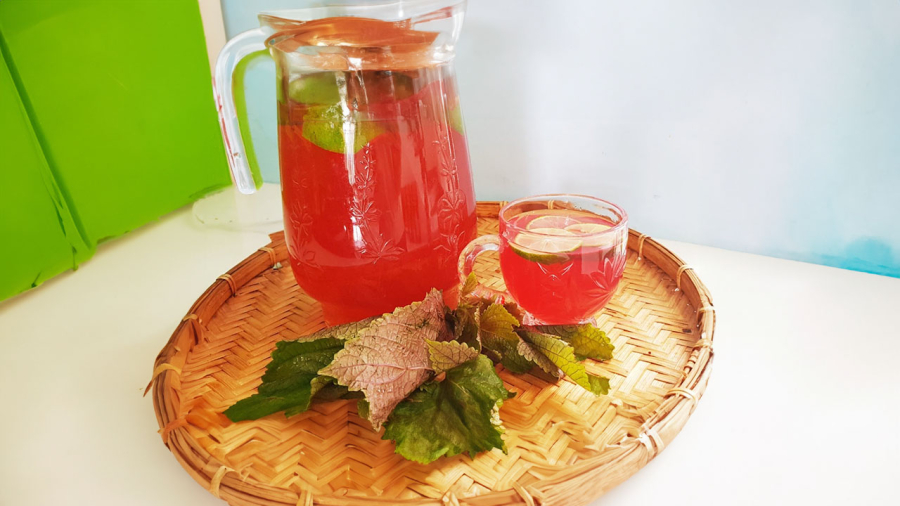
Health benefits of perilla leaves:
Antibacterial and detoxification: Perilla leaves have good antibacterial properties due to their essential oil. They are often used as a cover along with daikon radish in sashimi to not only create color but also bring a unique and strong aroma to the dish. Shiso is rich in polyphenols, which have antioxidant properties and help neutralize the smell of raw fish. Furthermore, the antioxidant effect of perilla leaves also helps prevent food poisoning. Therefore, when eating raw seafood, perilla leaves are indispensable for sterilization, enhancing the flavor, and preventing food poisoning.
Cold relief and beauty: When Vietnamese people catch a cold, they often cook perilla leaf porridge, which is a well-known and widely transmitted experience. On the other hand, Japanese women use perilla leaves for cooling, beauty, skin whitening, and wrinkle reduction. The method of whitening with perilla leaves is very famous from Japan. Nowadays, perilla leaves are used as ingredients in many functional food and cosmetic products for acne treatment and hygiene.
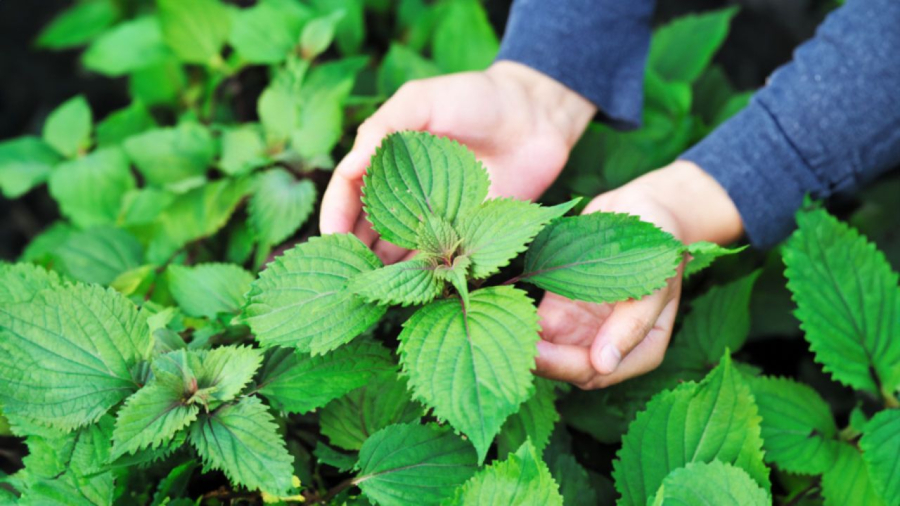
In traditional Chinese medicine, perilla leaves have a spicy, warm, and non-toxic taste. The flavor is considered a blend of fennel, licorice, cinnamon, and peppermint, with antibacterial properties.
Perilla leaves have a expectorant effect for relieving cold symptoms caused by coldness and making the body sweat and cool down.
In food technology, perilla leaves are extracted for their essential oil. In daily life, perilla leaves can be consumed raw or as a side dish with other raw vegetables, cooked for cold relief porridge, crab soup, snail dishes, finely chopped for salads, or boiled for beverages. Perilla leaves are also rich in antioxidants and high in vitamins K, A, and C, which help prevent cellular damage caused by free radicals, resulting in smooth, bright, and healthy skin. Perilla leaves are also used for skin whitening and treating external acne very effectively.
Weight loss support: Rosmarinic acid in perilla leaves helps inhibit the absorption of sugar and fat. Drinking perilla leaf water helps support weight loss and improve metabolism.
Regulating stable blood sugar: Perilla leaves contain rosmarinic acid and chlorogenic acid, which help prevent an increase in blood sugar levels, reduce the absorption of sugar and fat, and reduce the risk of diabetic complications.
Anti-inflammatory: Perilla leaf water improves blood circulation and protects the body from swelling. Rosmarinic acid in perilla leaves helps treat food poisoning and is suitable for controlling asthma and arthritis.
Oral health care: A study from Asahi University (Japan) also showed that perilla leaves can inhibit the growth of harmful bacteria in the mouth. Therefore, you can cook perilla leaf water for gargling and daily consumption.

























